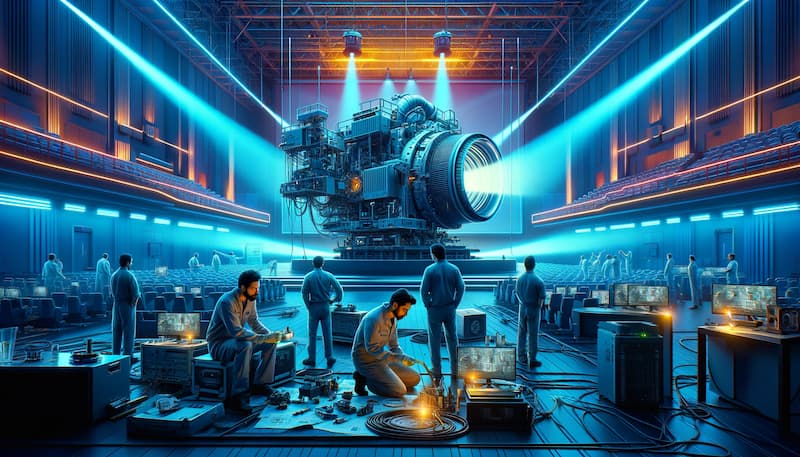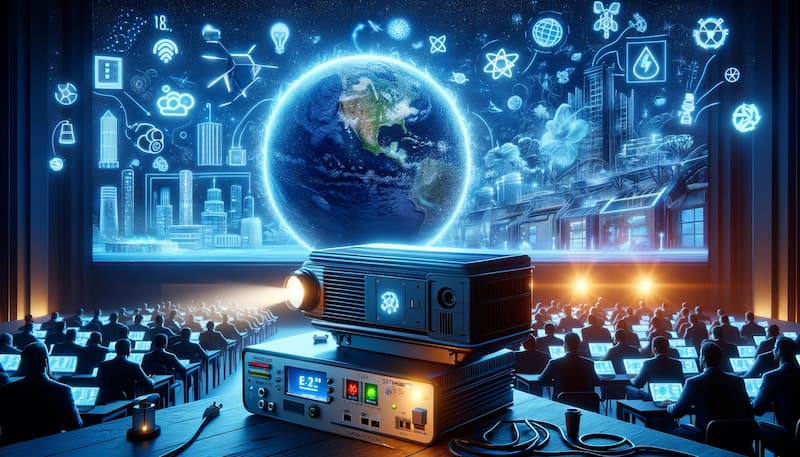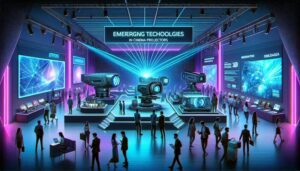
The magic of cinema has captivated audiences around the world for over a century, constantly evolving through technological advancements that have significantly improved the viewing experience. At the heart of this evolution are cinema projectors, which have transitioned from the earliest film devices to today’s sophisticated digital machines. This article dives into the latest innovations in cinema projectors for 2024, highlighting how they are set to transform the cinematic experience for audiences in the United States and South America.
The Importance of Innovation in Cinema Projectors
Cinema projectors are not just tools for displaying images; they are the portals through which stories come to life on the big screen. From the earliest movie projectors to modern digital systems, each advancement has represented a leap forward in visual and sound quality. Today, innovation in cinema projectors focuses on delivering sharper images, more vivid colors, and greater energy efficiency, enhancing immersion and sustainability.

The cinema industry is experiencing a technological revolution that redefines the visual experience in theaters worldwide. In 2024, several emerging technologies are at the forefront of this transformation, offering viewers unprecedented immersion and image quality. Below, we explore the most impactful innovations in cinema projectors and how they are changing the way we enjoy movies.
Laser and LED light sources are rapidly replacing traditional lamps in cinema projectors due to their numerous advantages. One is the expansion of the color range they can reproduce, approaching the Rec. 2020 color space, meaning viewers can see more vivid and real colors than ever before. Additionally, both laser and LED offer a significantly longer lifespan, reducing the need for frequent replacements and lowering maintenance costs for cinema operators.
Laser, in particular, allows for a more consistent and uniform light projection over time, ensuring that image quality does not deteriorate with use. This is crucial for maintaining a premium viewing experience in all projections. Moreover, laser projectors can achieve much higher brightness levels, which is especially important for large screens and 3D projections, ensuring that images are clear and vivid under any lighting condition.
A projector’s resolution determines the amount of detail an image can display. With the advent of 4K and now 8K resolutions, the clarity and detail we can experience on the big screen have reached astonishing levels. While 4K offers a resolution of 3840 x 2160 pixels, 8K doubles that figure in both dimensions, resulting in a 7680 x 4320 pixel image. This means that projected images are more detailed and realistic, with smoother lines and less visible pixelation, even on the largest cinema screens.
This ultra-high resolution makes viewers feel as if they are looking through a window into the real world, rather than at a screen. It is particularly beneficial for genres that rely on rich visual details, like nature and science fiction movies, where every detail counts to fully immerse the viewer in the experience.

High Dynamic Range (HDR) is another technology transforming cinematic projection. By increasing the range between the brightest whites and the darkest blacks, HDR allows projected images to have much greater contrast. This not only improves the visual depth of the image but also enhances details in dark and bright areas, offering a richer and more textured visual experience.
Additionally, HDR enhances the saturation and vividness of colors, making projected images appear more vibrant and full of life. This improvement in color reproduction and contrast significantly contributes to the viewer’s immersion, making scenes more impactful and emotionally resonant.
The integration of laser and LED lighting technologies, along with improvements in resolution and HDR, is setting a new standard in cinematic projection quality. These innovations not only enhance the visual experience for the viewer but also offer significant operational and environmental benefits for cinemas. With greater energy efficiency, a longer lifespan of components, and superior image quality that remains constant over time, cinemas can offer exceptional experiences while reducing their environmental impact and operational costs.
These emerging technologies in cinema projectors are opening new possibilities for visual storytelling, allowing filmmakers and exhibitors to explore new ways of telling stories and thrilling audiences. As we move into 2024 and beyond, we can expect these innovations to continue evolving, taking the magic of cinema to new heights and ensuring that the experience of going to the movies remains unique and unforgettable.

Artificial intelligence is revolutionizing image calibration in cinema projectors. AI systems can automatically adjust focus, color, and brightness in real-time, ensuring that image quality is optimal at all times. This automation not only enhances the viewer’s experience but also reduces the workload for cinema staff, allowing for precise adjustments that previously required expert manual intervention.
Innovations in connectivity enable remote management of projectors, facilitating content distribution and equipment maintenance. Cinemas can now receive and project digital movies directly from distributors, update projector software, and monitor equipment performance from anywhere. This capability improves operational efficiency and ensures consistent high-quality projection.
Energy efficiency has become a crucial aspect of innovations in cinema projectors. LED and laser lighting technologies not only improve image quality but also consume less energy than their lamp-based predecessors. This reduction in energy consumption contributes to lowering the carbon footprint of cinemas, aligning with sustainability goals and reducing operational costs.

In the United States and South America, several cinemas have led the adoption of these technologies, demonstrating their positive impact on both the viewer’s experience and cinema operation. For example, a cinema in São Paulo, Brazil, has seen a 20% increase in attendance after installing 4K HDR projectors with laser lighting, citing the exceptional quality of the image as a key factor. Similarly, a cinema in Texas, USA, has reported significant reductions in energy and maintenance costs after upgrading to projectors with remote management and AI calibration.
The latest innovations in cinema projectors are heralding a new era for the film industry. As we move into 2024, the combination of emerging technologies such as laser, LED, 4K, 8K, HDR, AI, and advanced connectivity promises to transform not only how movies are projected but also how we experience them. With these advancements, cinemas are well-positioned to offer unforgettable experiences that draw audiences to the magic of the big screen, maintaining the relevance of cinema in the digital age.







